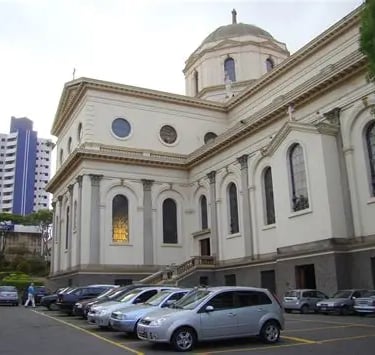The Southern Legacy in Brazil’s Heartland — The City of the Confederates
The Southern Legacy in Brazil’s Heartland — The City of the Confederates. Discover Americana, São Paulo — the “City of the Confederates” and one of Brazil’s most unique destinations. Explore its Southern U.S. roots, textile legacy, cultural landmarks, and high quality of life for residents and expats.
TO STAY
Unveiled Brazil
10/23/20254 min read


Americana, São Paulo: The Southern Legacy in Brazil’s Heartland — The City of the Confederates
Americana, located in the interior of São Paulo state, stands out for its remarkable and unusual founding story in Brazilian history. Contrary to popular belief, its origins are not linked to the Great Depression of 1929, but to a much earlier migration — the arrival of Southern U.S. immigrants after the end of the American Civil War (1861–1865).
Although the first settlers arrived in 1865, it was the city’s later industrial expansion — especially in the textile sector — that drove Americana’s prosperity. By the 1930s, the city had already established itself as an industrial hub. Its name, Americana, directly honors the community of North American settlers who first colonized the region.
History and Culture: The Confederate and Textile DNA
Southern Roots:
Americana’s story begins with the arrival of Southern U.S. families — known locally as “Confederados” or “Americans” — who brought with them agricultural expertise, modern tools (like the plow), and new crops such as the Georgia Rattlesnake watermelon. These pioneers infused the local culture with a distinct Southern influence that remains visible today.
Founding the Town:
The urban nucleus that gave birth to Americana developed around a railway station built by the Companhia Paulista. In 1900, the station was renamed Vila Americana Station in honor of its settlers. The town gained full municipal independence in 1924.
The Textile Boom:
Americana’s true economic engine emerged from its textile industry. The Carioba Textile Factory, founded by a family of German descent but inspired by European industrial models, marked the beginning of urban and economic transformation. By the 1930s, Americana was known as the “Rayon Capital” — one of Brazil’s leading textile centers — attracting workers and immigrants from across the country and abroad.
Cultural Heritage:
The American legacy endures through landmarks like the Confederate Chapel (Capela do Campo) and cultural events that celebrate this unique historical fusion. Americana also invests in cultural revitalization, with art museums, theaters, and one of the most respected zoos in São Paulo state.
Economy and Standard of Living
Today, Americana is recognized as one of the most prosperous cities in the Campinas metropolitan region.
Economic Profile: Though the textile industry has faced global challenges, it remains relevant. The city has diversified its economy with strong commerce, services, and light manufacturing sectors.
Per Capita Income: In 2021, Americana’s GDP per capita reached R$ 62,271.47, surpassing the state average — a reflection of its economic stability and high quality of life.
Urban Infrastructure and Traffic
Americana is a well-planned city with a high level of urbanization but faces typical challenges of fast-growing urban centers (population: ~240,000).
Infrastructure: Over 95% of streets are paved, and the city enjoys nearly universal access to water, sewage, and LED street lighting.
Traffic: The city experiences heavy traffic during rush hours, particularly on major avenues — a growing concern for residents.
Healthcare and Education
Americana is a regional reference in healthcare and education, offering both public and private options.
Healthcare: The city operates a Municipal Hospital, several Basic Health Units (UBSs), and a High-Complexity Oncology Center (Unacon). The healthcare system has undergone modernization and fleet renewal.
Education: Americana offers an extensive network of public and private schools. It is home to respected higher education institutions such as UNISAL (Centro Universitário Salesiano de São Paulo) and campuses of other major universities.
Public Safety and Quality of Life
Americana is known for its safety and high living standards compared to larger metropolitan areas.
While crime data fluctuates yearly (and should be verified with official state security reports), the city consistently ranks among the safest in the region. The absence of large informal settlements and strong community infrastructure contribute to its positive perception of safety.
Cost of Living and Climate
Cost of Living: Americana’s cost of living is higher than in smaller interior cities, especially in upscale neighborhoods. Housing — whether renting or buying — represents the main expense.
Climate: The city enjoys a tropical highland climate (Cwa), with hot, rainy summers and mild, dry winters. The annual average temperature is pleasant, though summer heat can be intense.
Culture, Theaters, and Museums
Main Theaters:
🎭 Lulu Benencase Municipal Theater: The city’s flagship cultural venue, hosting theater, music, and dance performances.
📍 Address: Rua Gonçalves Dias, 696 – Girassol.🎤 Paulo Autran Theater: A modern, air-conditioned space for musicals, stand-up comedy, and conferences, with capacity for around 450 people.
🎶 Elis Regina Open-Air Theater: Another iconic cultural stage for public events and performances.
Museums:
🖼 Museum of Contemporary Art (MAC) Americana:
Houses around 300 artworks, organizes regular exhibitions, and maintains a specialized art library.
📍 Location: Avenida Brasil, 1293 – Jardim São Paulo.
(Visit the official city website for details and opening hours.)🏛 Conselheiro Carrão Historical Museum (Casarão / Salto Grande Mansion):
A landmark built between 1799–1810, showcasing the region’s architectural and historical heritage. Some sources indicate it may be temporarily closed for renovation, so confirm before visiting.
Outdoor Attractions and Family Leisure
Americana offers a wealth of outdoor activities and ecological attractions:
🦓 Municipal Ecological Park “Eng. Cid de Almeida Franco” (Americana Zoo): Home to over 400 animals from 100 species, it’s a family favorite and a key wildlife conservation site.
🌿 Municipal Botanical Garden “Prefeito Carroll Meneghel”: Adjacent to the zoo, this peaceful green space hosts 7,000 plant species — perfect for walking and relaxing.
🔭 Americana Municipal Observatory (OMA): Features a reflector telescope and digital planetarium, serving as an educational and scientific hub.
🎶 Estação Cultura Americana: A former train station turned cultural venue that hosts concerts, fairs, and festivals.
⛪ Basilica of St. Anthony of Padua: A neoclassical Catholic church and historical landmark with stunning architecture.
🌊 Praia dos Namorados (Lovers’ Beach): A leisure area formed by the Atibaia River, featuring kiosks, bars, and water sports.
🥟 Municipal Market (Mercadão): A must-visit for traditional food, local produce, and the city’s famous pastéis (Brazilian fried pastries).
For Expats and Foreign Residents
Americana is highly recommended for expats, foreign investors, and immigrants seeking stability, opportunity, and a welcoming community.
Work Opportunities: A diversified economy, high per capita GDP, and a strong service sector make it an attractive destination for professionals.
Quality of Life: Excellent infrastructure, modern healthcare, strong education, and 100% LED street lighting rank Americana among the top cities for living in São Paulo’s interior.
Family Environment: Safe, green, and family-oriented — with zoos, parks, and cultural venues offering entertainment for all ages.
Cultural Openness: Founded by immigrants (American, Italian, German), the city maintains a tradition of hospitality and multicultural integration, making it easy for newcomers to adapt and thrive.
Keywords: Americana São Paulo, City of the Confederates Brazil, travel guide Americana SP, history of Americana Brazil, living in Americana São Paulo, Confederate immigration Brazil, Americana textile industry, Americana expat life, best cities in São Paulo interior, Americana tourism guide
Learn More:
Santos | Indaiatuba | São Paulo | Vinhedo
